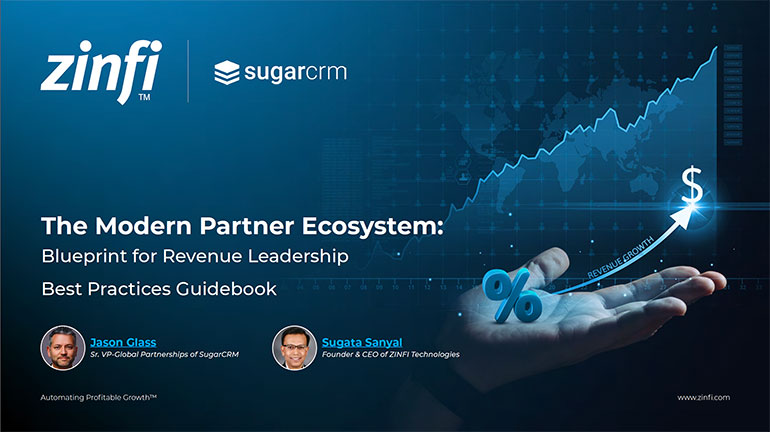Glossary - What is - Federation
What is a Federation?
In business and technology, a federation refers to a group of organizations or entities that come together to form a union while maintaining their identities. This arrangement allows members to cooperate on shared goals or projects without sacrificing autonomy. Federations are often seen in industries where collaboration across various stakeholders is beneficial for sharing resources, technology, and knowledge, enhancing the capabilities of all involved.
In partner ecosystem management and partner management automation, the concept of a federation is crucial as it enables different organizations to collaborate and share resources while managing their operations independently and efficiently. This structure supports enhanced scalability, flexibility, and innovation across the network, helping federated entities to respond more effectively to market demands and opportunities.
Key Takeaways:
- Shared Resources and Capabilities: Federations enable member organizations to pool resources and capabilities, leading to cost reductions, improved efficiencies, and enhanced service offerings. For instance, ZINFI’s Partner Portal can facilitate the sharing of marketing resources and sales tools among federated members, ensuring all parties have access to what they need to succeed. Read more on Partner Portal software.
- Maintaining Autonomy While Collaborating: One of the critical benefits of a federation is the ability of its members to retain their independence while collaborating on shared objectives. This balance is crucial for organizations that value sovereignty and recognize cooperation’s benefits. ZINFI’s Partner Relationship Management solutions respect this balance by allowing tailored collaborations that fit each member’s policies and goals.
- Enhanced Innovation Through Collaboration: Federations foster collaborative innovation by combining diverse perspectives and expertise. This can accelerate the development of new technologies or solutions, benefiting all members. ZINFI’s ecosystem management tools enable seamless cooperation and knowledge exchange, driving innovation within the federation.
- Scalability and Flexibility: Federations provide a scalable and flexible framework that can adapt to changing market conditions and member needs. This adaptability is essential for organizations looking to grow without being constrained by rigid structures. ZINFI’s management automation tools support scalable and flexible operations that adjust as the federation evolves.
- Strategic Market Expansion: Federations can strategically expand into new markets by leveraging each member’s local presence and expertise. This collective approach can reduce the risks and costs associated with market expansion while increasing the chances of success. ZINFI’s market development funds (MDF) programs can support these expansion efforts by allocating resources where they are most effective.
Summary of Key Takeaways:
In the business sense, a federation is a robust structure for facilitating collaboration, sharing resources, and maintaining organizational autonomy. It enhances innovation, scalability, and market reach by allowing members to benefit from shared goals while respecting individual operations and strategies. ZINFI’s partner management solutions support federations by providing the tools for efficient resource sharing, collaboration, and market expansion.
Key Examples:
- Automotive Manufacturing: Automotive federations can share research and development efforts to innovate vehicle technologies while retaining brand individuality.
- Consumer Electronics: Federations in this sector can collaborate on component sourcing and technology sharing to streamline production and reduce costs.
- Energy Production: Energy federations might focus on joint ventures for sustainable energy projects while operating independently in their respective markets.
- Financial Services: Banks and financial institutions can form federations to develop new fintech solutions and expand digital banking services.
- Food and Beverage: Companies can collaborate on supply chain efficiencies while maintaining distinct product lines and brands.
- Healthcare Services: Healthcare federations can share medical research and patient care innovations while each entity operates its facilities.
- Information Technology: IT federations often focus on security standards and shared infrastructure to enhance service offerings.
- Pharmaceutical Development: Pharmaceutical companies can collaborate on drug research while individually handling marketing and distribution.
- Retail Industry: Retail federations may share logistics and warehousing solutions to enhance operational efficiencies.
- Telecommunications: Telecom federations can develop shared network infrastructure to expand coverage and reduce operational costs.
Conclusion
Federations represent a strategic model in modern business, enabling entities to collaborate effectively while maintaining autonomy. This structure supports resource sharing, innovation, and market expansion, making it an attractive option for companies seeking to leverage collective strengths without compromising individual strategies. With tools like those provided by ZINFI, federations can maximize their potential, achieving greater efficiencies and market impact.
Associated Keywords:
- Collaborative Networks
- Federation In Business
- Market Expansion















